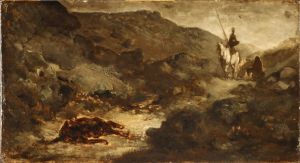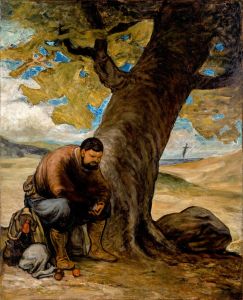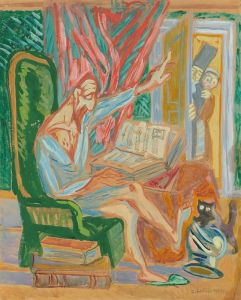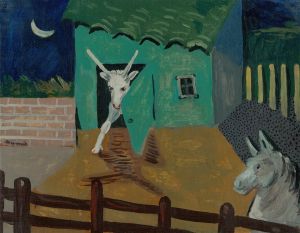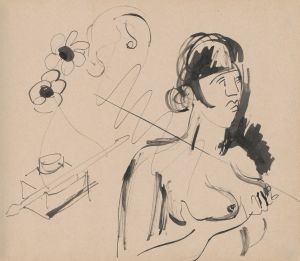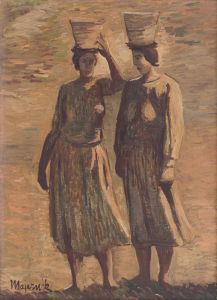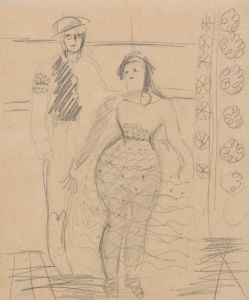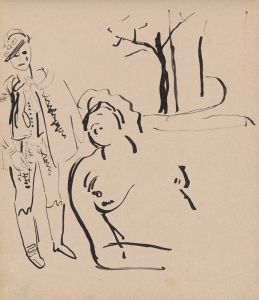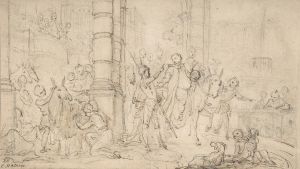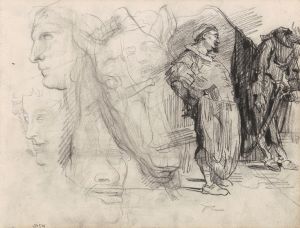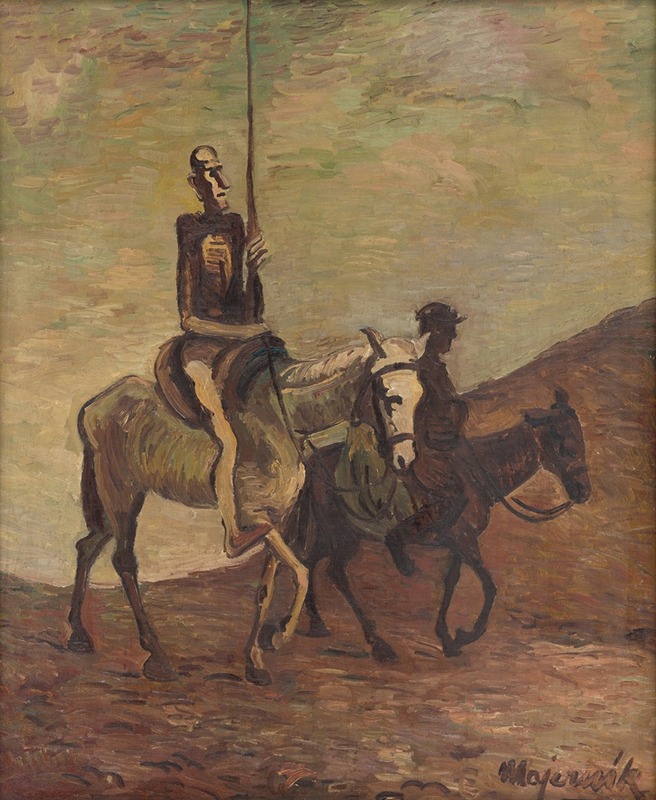
Don Quichotte and Sancho Panza
A hand-painted replica of Cyprián Majerník’s masterpiece Don Quichotte and Sancho Panza, meticulously crafted by professional artists to capture the true essence of the original. Each piece is created with museum-quality canvas and rare mineral pigments, carefully painted by experienced artists with delicate brushstrokes and rich, layered colors to perfectly recreate the texture of the original artwork. Unlike machine-printed reproductions, this hand-painted version brings the painting to life, infused with the artist’s emotions and skill in every stroke. Whether for personal collection or home decoration, it instantly elevates the artistic atmosphere of any space.
Cyprián Majerník was a Slovak painter born on November 24, 1909, in Veľké Kostoľany, then part of Austria-Hungary, and he passed away on July 4, 1945, in Prague, Czechoslovakia. Majerník is known for his expressive and often melancholic works that reflect the turbulent times of his era, particularly the interwar period and World War II. One of his notable paintings is "Don Quichotte and Sancho Panza," which showcases his unique style and thematic concerns.
"Don Quichotte and Sancho Panza" is an oil painting that depicts the iconic characters from Miguel de Cervantes' classic novel "Don Quixote." The novel, first published in two parts in 1605 and 1615, tells the story of a delusional knight, Don Quixote, who embarks on chivalric adventures with his loyal squire, Sancho Panza. Majerník's interpretation of these characters is imbued with a sense of poignancy and introspection, reflecting the artist's own experiences and the broader socio-political context of his time.
In Majerník's painting, Don Quixote is often portrayed as a gaunt, idealistic figure, embodying the quixotic pursuit of noble but impractical ideals. Sancho Panza, in contrast, is depicted as a more grounded and pragmatic character, providing a counterbalance to Don Quixote's lofty aspirations. The dynamic between the two characters in the painting highlights themes of idealism versus realism, and the often tragicomic nature of human endeavors.
Majerník's use of color and composition in "Don Quichotte and Sancho Panza" is notable for its emotional depth and expressiveness. The painting typically features a muted color palette, with somber tones that evoke a sense of melancholy and introspection. The figures of Don Quixote and Sancho Panza are often rendered with a sense of movement and dynamism, capturing the restless spirit of their adventures.
The historical context in which Majerník created this painting is also significant. The interwar period and the lead-up to World War II were times of great uncertainty and upheaval in Europe. Majerník, like many artists of his generation, was deeply affected by the political and social turmoil of the time. His works often reflect a sense of disillusionment and a search for meaning in a world that seemed increasingly chaotic and fragmented.
"Don Quichotte and Sancho Panza" can be seen as a reflection of Majerník's own struggles and aspirations. The painting captures the tension between idealism and reality, a theme that resonates with the broader human experience. Through his depiction of these timeless literary characters, Majerník explores the complexities of the human condition, making the painting a poignant and enduring work of art.
Cyprián Majerník's contribution to Slovak and European art is significant, and his works continue to be appreciated for their emotional depth and historical relevance. "Don Quichotte and Sancho Panza" remains one of his most celebrated pieces, offering a window into the artist's soul and the turbulent times in which he lived.





